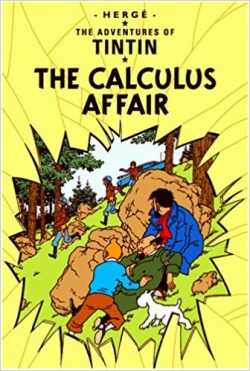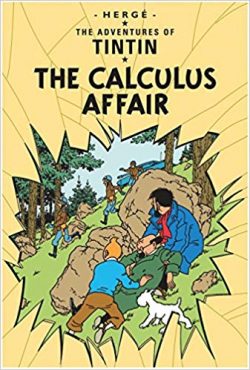

By Hergé, Bob De Moors and others, translated by Leslie Lonsdale-Cooper & Michael Turner (Egmont UK)
ISBN: 978-1-40520-817-8 (HB) 978-1-40520-629-7 (TPB)
Georges Prosper Remi, known all over the world as Hergé, created an incontrovertible masterpiece of graphic literature with his tales of a plucky boy reporter and his entourage of iconic associates.
Singly, and later with assistants including Edgar P. Jacobs, Bob de Moor and other supreme stylists of the select Hergé Studio, he created 23 splendid volumes (originally produced in brief instalments for a variety of periodicals) that have grown beyond their popular culture roots and attained the status of High Art.
On leaving school in 1925, he worked for the conservative Catholic newspaper Le Vingtiéme Siécle where he fell under the influence of its Svengali-esque editor Abbot Norbert Wallez. A devoted boy scout, a year later Remi produced his first strip series The Adventures of Totor for monthly Boy Scouts of Belgium magazine, and by 1928 was producing the contents of the newspaper’s weekly children’s supplement Le Petit Vingtiéme.
He was illustrating The Adventures of Flup, Nénesse, Poussette and Cochonette, written by the staff sports reporter when Wallez asked Remi to create a new adventure series. Perhaps a young reporter who roamed the world, doing good whilst displaying solid Catholic values and virtues?
The rest is history…
After a troubled period during the war years, the Boy Reporter and his companions became a staple of the European childhood experience through weekly trans-national magazine Le Journal de Tintin and regular album collections. The anthology comic regularly achieved a circulation in the hundreds of thousands, allowing the artist and his team to remaster past tales and create bold new romps reflecting the tone of the times.
Although Hergé’s later life was troubled by personal problems and health issues, this only seemed to enhance his storytelling abilities. The later adventures are all sleek, polished thrillers, rife with intrigue and camaraderie; perfectly garnished with comedy set-pieces of timeless brilliance. Even after decades of working, the artist/auteur continued fresh and challenging, always seeking new arenas of drama to explore.
Hergé entered the most successful period of his artistic career. He had mastered his storytelling craft, possessed a dedicated audience eager for his every effort and was finally able to say exactly what he wanted in his work, free from fear or censure. That meant a return to observations of contemporary themes and situations, as in this effective treatise on the burgeoning Cold War…
L’Affaire Tournesol began in the Christmas issue of the Belgian edition of Le Journal de Tintin (dated December 22nd 1954) and ran uninterrupted until February 22nd 1956. The French editions ran it from February 1955, and the completed saga was collected as an album in 1956 and is notable for the introduction of three characters who would become semi-regular cast members: Jolyon Wagg, Cutts the Butcher, and recurring villain Colonel Spoons.
The Calculus Affair once again sees the zany Professor abducted from the palatial home of Captain Haddock, resulting in a dire and desperate chase through espionage-infested Europe. Our heroes are hampered in their efforts to save their friend by the introduction of the infinitely annoying and crushingly dull insurance salesman Jolyon Wagg and, more ominously, rival bands of relentless, ruthless spies.
As they doggedly pursue Calculus to Geneva, Tintin and Haddock encounter not only the insidious agents of Borduria but find that their erstwhile allies of Syldavia are also trying to make the Professor “disappearâ€. After frantic chases, pitched battles and assassination attempts, diplomatic duplicity defeats them, and Calculus becomes an unwilling guest of the totalitarian Bordurians, who are pleased to accept as a “gift†his new invention, which they intend to use as a weapon of mass destruction.
Temporarily stymied, Tintin and Haddock finagle their way into the country, and with the aid of Opera Diva and human tornado Bianca Castafiore, bamboozle the secret police to rescue the Professor and save the day.
Although all the elements in play are tried and trusted ingredients of the Tintin formula, the level of artistic achievement here is superb and the interplay of tense drama, slapstick comedy and breakneck action make this brooding thriller the most accomplished of Hergé’s tales. The simple fact that the contemporary Cold War fever is absent for modern readers makes no difference at all to the enjoyment of this magnificent graphic masterpiece.
The Calculus Affair: artwork © 1956, 1984 Editions Casterman, Paris & Tournai. Text © 1960 Methuen & Co Ltd/2012 Egmont UK Limited. All Rights Reserved.
